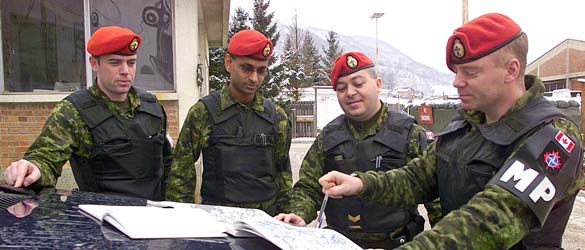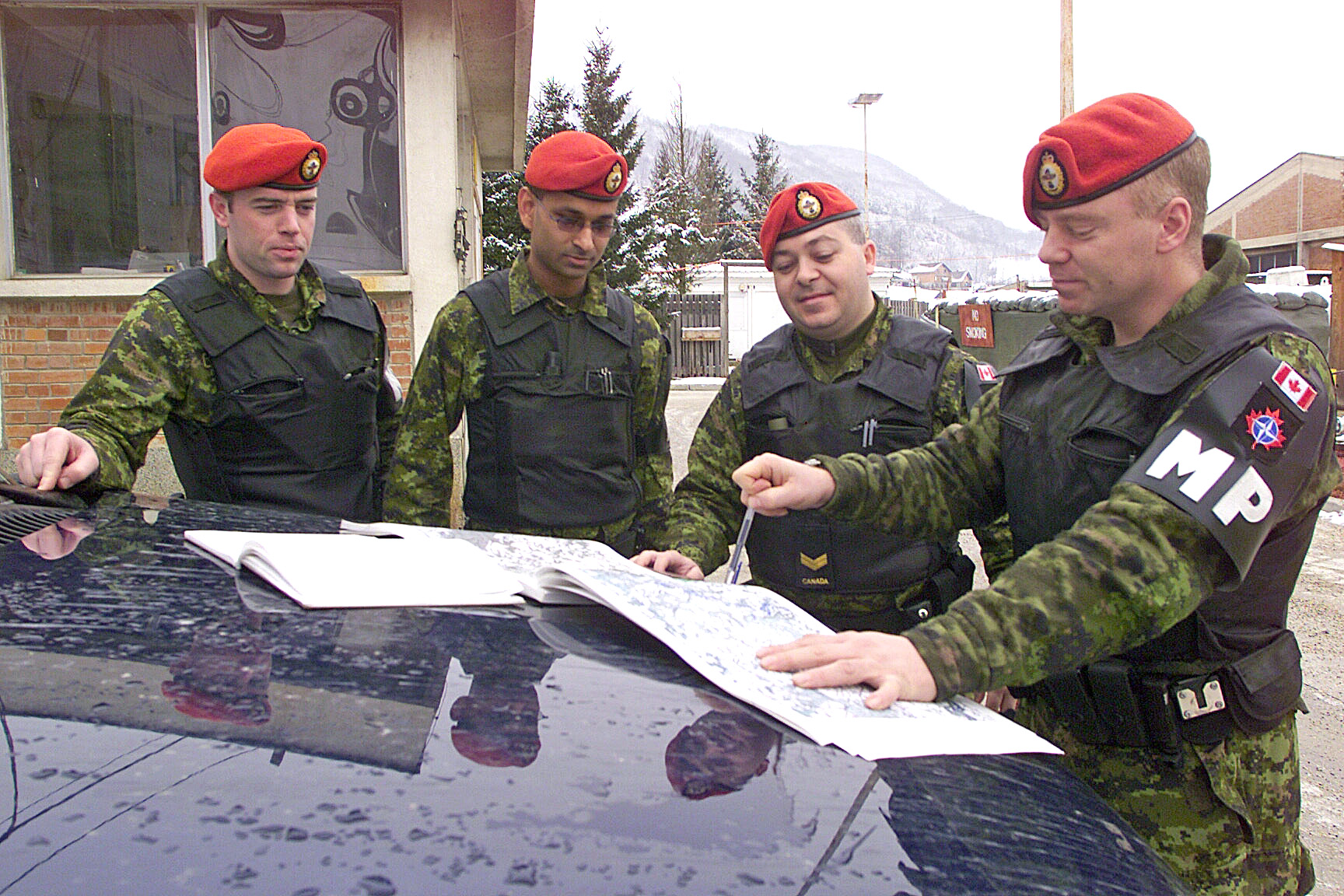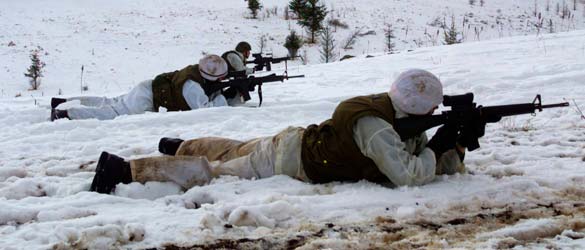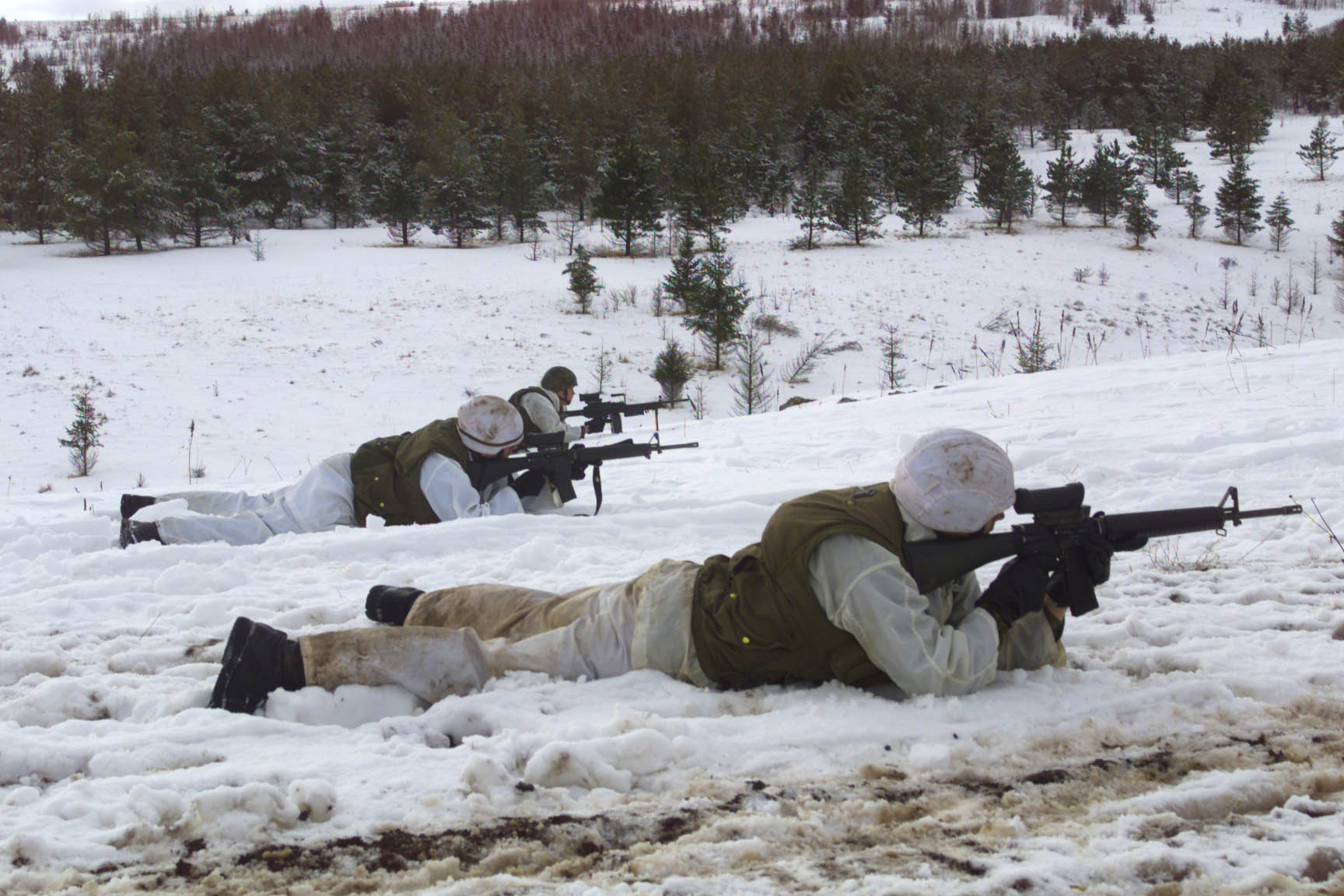Historical Sheet - The Canadian Armed Forces in the Balkans
Introduction
This publication is available upon request in alternate formats.
PDF Version
When Canadians think about Canadian Armed Forces personnel serving in overseas peace efforts, one of the first places they probably think about is the Balkan peninsula of southeast Europe.
Canadians have served in European Community, United Nations (UN) and North Atlantic Treaty Organization (NATO) missions in Croatia, Bosnia-Herzegovina, Serbia and Montenegro, and Macedonia – new countries that have risen out of the ashes of the former country of Yugoslavia. Beginning in 1991, tens of thousands of Canadian Armed Forces members strived over the years to help make the region secure and nurture the fragile peace so recovery can continue after years of fierce fighting.
Balkans
The Balkan countries which have seen such turmoil are located in southeast Europe, north of Greece and across the Adriatic Sea from Italy. This is a land of beautiful mountains, fertile plains and an island-studded coastline that stretches along the Adriatic Sea.
For much of the 20th century, this area was a single Communist country known as Yugoslavia. However, long-standing ethnic, religious and political differences between the Roman Catholic, Eastern Orthodox and Muslim populations who have lived there for centuries created an environment of distrust that made for an unstable situation.
Once the authoritarian rule in the country began to crumble, the different ethnic and religious factions erupted into violence. In the early 1990s, the various regions tried to split off and form their own countries, dividing along ethnic and religious lines. There were many cases of ethnic cleansing where entire villages or areas of minorities were persecuted, driven out or killed outright by armies.
The World Responds
As the world saw the violence descend on the region, the international community moved to respond. The first direct Canadian involvement would come in 1991-1992 when some Canadian Armed Forces officers participated in the European Community Monitoring Mission there.
Canada and other countries then deployed a large UN peacekeeping force (known as the United Nations Protection Force, or UNPROFOR) to try to curb the violence in the region, particularly in Croatia and Bosnia-Herzegovina. This would be only the first of a series of UN (and later, NATO) peace support efforts in Croatia, Bosnia-Herzegovina, Macedonia and Kosovo in the former Yugoslavia.
The situations that Canadian Armed Forces members encountered during their efforts in the Balkans were unique. The skills needed for a peace mission are often quite different from the skills required to fight a conventional conflict. Peacekeepers must be trained for war and for peace. The Canadians who have served in the Balkans over the years have performed many roles. They monitored ever-shifting and fragile cease-fire lines and forced open lines of supply to besieged areas in order to bring in food and humanitarian supplies to the civilians trapped in the middle of the fighting. In the waters of the Adriatic Sea, our country deployed naval and air resources to assist the UN in its naval blockade of arms shipments to the region. Canadians also tried to protect areas of ethnic minorities (so-called "safe areas" which would tragically prove to be not very safe) which were under siege from the majority militias.
Canada and other peacekeeping nations faced huge challenges in the Balkans and there was only so much they could do to curb the worst of the violence brought on by the hatred and viciousness of the combatants there. Many horrible acts were perpetrated that the peacekeepers simply could not prevent.
Today, the active fighting is over. The last sizable Canadian Armed Forces presence left the region in 2004, but a European Union peace support force remains in the region to help keep the peace and support those who live in the region as they move toward a more peaceful future.
Facts and Figures
- The largest number of Canadians to serve in a UN mission in the region at any one time was 2,000. More than 40,000 troops from many countries took part in the largest UN contingent that served during the peace support missions.
- NATO contingents continue to play a peacekeeping role in the region. At times, NATO troop strengths have reached 60,000, including up to 1,500 Canadians.
- In the spring of 1999, Canadian pilots flew combat missions for the first time since the Korean War.
- In Macedonia in 1999-2000, Canada sent its largest single overseas deployment of troops since the Korean War. Canada also deployed heavy tanks in a conflict situation for the first time since the Korean War.
Heroes and Bravery
Often we think of the dangers of war and heroic acts of bravery as belonging to generations of the past. However, in the 1990s, Canadian Armed Forces members found themselves in a full-fledged war zone where peacekeeping troops had to engage in firefights to try to fulfill their missions.
- Major Joseph Servais and Captain Joseph Brosseau both were awarded Meritorious Service Medals for their work as monitors with the European Union Monitoring Mission in the region in the early 1990s. Servais was responsible for eight monitoring teams, often conducting the most dangerous missions himself. Brosseau led the mission in Sarajevo at the time, planning and leading the dangerous six-hour convoy to safely evacuate his group when ordered to leave.
- In September 1993, Canadian soldiers experienced their most intense firefight since the Korean War when members of the Princess Patricia's Canadian Light Infantry were pounded with heavy machine gun fire, grenades, cannons and small arms fire in the Medak Pocket of Croatia.
- Captain Joseph Bélisle and Sergeant Mario Forest received Medals of Bravery while serving in Sarajevo for rescuing two seriously wounded women. While under sniper fire, Captain Bélisle returned fire to shield Sergeant Forest, who crawled to reach the two victims and remove them from danger. The two Canadians, still under fire, then helped the women into a military vehicle.
- Master-Corporal Jean Kenneth Jensen was awarded the Medal of Bravery for his actions in August 1992. The United Nations sector headquarters in Sarajevo was under artillery fire and, hearing calls for help, he ran to the scene and guided a wounded soldier to safety. Master-Corporal Jensen returned twice more to look for additional victims and directed a first aid team to the area.
- On two occasions, Canadian soldiers found themselves in hospitals full of patients that had been abandoned by staff due to increased fighting in the area. One situation involved a Royal 22e Régiment Battle Group patrol led by Lieutenant Andrew Webb and Sergeant André Latreille. These troops found, protected and gave aid to a large number of patients who needed a very high level of care.
Sacrifice
Canadians can be rightfully proud of their reputation around the world as a force for peace, but this comes at a price. About 130 Canadians have died in the course of Canada’s peace support operations around the world. In the Balkans, 23 Canadians lost their lives in the various missions and many more were injured.
The wounds of peacekeeping are not always caused by hostile fire, land mines or accidents. They do not always leave physical scars. The mission in the former Yugoslavia was particularly difficult for those deployed there. The human atrocities perpetrated against the civilian population were horrific – witnessing human brutality on this scale has a deep impact on those who see it.
Learning about what the Veterans of these Canadian Armed Forces missions in the Balkan States have done and sacrificed in the course of their duties is important. By understanding their role, we honour their achievements. Knowing about Canada’s values and history helps us understand the Canada we live in today.
Canada Remembers Program
The Canada Remembers Program of Veterans Affairs Canada encourages all Canadians to learn about the sacrifices and achievements made by all those that served, and continue to serve, during times of war and peace, and to become involved in remembrance activities that will help to preserve their legacy for future generations of Canadians.
- Date modified:



